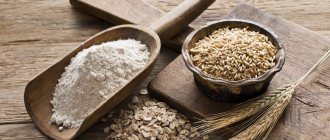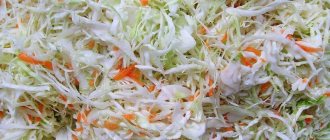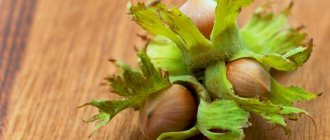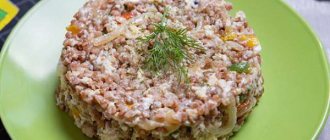In ancient times, coconut trees saved people from cannibals. It happened on the islands of Polynesia. The tree acted as a real fortress, providing food for sustenance and water, or rather, milk contained in the fruits of the tree. Dense foliage protected from arrows. And the most interesting thing is that the nuts on the tree ripen gradually, that is, they could provide food and water for a person for a long time. The times of cannibalism are over, and coconuts are simply eaten, they are tasty and healthy.
| Calories per 100 g, (kcal): | 354 |
| Protein per 100 g, (g): | 3.4 |
| Fat per 100 g, (g): | 33.5 |
| Carbohydrates per 100 g, (g): | 6.2 |
| Glycemic index: | 45 |
What do coconuts look like and where do they grow?
Coconut trees are found in Sri Lanka, Indonesia and Brazil, and Thailand.
The fruit is a fruit with a hard shell containing pulp and liquid. As the nut ripens, the water becomes milk.
In fact, it is incorrect to call a coconut a nut. By botanical standards, it is a drupe, the same as an apricot or cherry. Coconut has all the characteristics of a drupe, has coarse fibers, a lot of liquid and a pit. An interesting fact is that coconut has a very rich vitamin and mineral composition, which can fully support the vital functions of the human body.
Stages of coconut ripening
The period of complete ripening of a coconut takes about a year. The age of milk maturity occurs approximately six months after flowering.
Distinctive features of the milk fruit:
- green peel;
- Inside, along with the pulp, there is about half a liter of liquid - coconut water;
- Fresh milk coconut water is sterile.
Gradually the skin turns brown. The fibrous layer becomes thicker, but the amount of already cloudy liquid gradually decreases, since as a result of mixing water with pulp, coconut milk is formed, which is widely used.
In an overripe fruit, any liquid is completely absent. However, this does not indicate its depravity. Most often, these “dry” nuts are used to make coconut flakes for culinary purposes.
Useful properties of coconut
The pulp contains a lot of indigestible dietary fiber, which is important for ensuring the normal functioning of the stomach.
They have a stimulating effect on peristalsis and, as it were, remove food debris from the walls of the esophagus and stomach. Coconut saturates the body with fats, but healthy ones that do not contain cholesterol.
The nut has a rich vitamin composition, these are B vitamins, there is vitamin A, PP, E and C. Coconut contains a large amount of copper. And it, in turn, plays an important role in the process of converting iron in the body, which stabilizes the amount of hemoglobin.
Thanks to lauric acid, coconut helps get rid of harmful microbes and improve the functioning of the stomach.
general characteristics
Coconut is not a nut at all, as is often said. It is the fruit of a palm tree originally native to Malaysia. Currently, this plant is grown almost everywhere in tropical climates.
The benefits of coconut as an important agricultural export product are recognized by many countries - Indonesia, India, Sri Lanka, the Philippines, Thailand
The most favorable place for the growth of a coconut palm is sandy soil on the sea coast. This is a tall, slender plant that can reach a height of forty meters. Its leaves are dense, smooth and long. The coconut tree bears fruit for up to fifty years.
The ripening period of a coconut lasts up to ten months. It is a round fruit covered with a strong shell with hard fibers. Ripe coconut is brown in color. The shell of the unripe fruit is green. Inside there is white tender pulp and sweet clear juice - “coconut water”. The ripe fruit weighs from one and a half to two and a half kilograms, and its diameter can reach thirty centimeters.
Coconut juice. Benefits and harms
In our country it is quite difficult to find natural coconut water. It occurs exclusively in unripe fruits and is the basis for the formation of milk. It tastes like a sweetish-sour liquid. It is almost completely free of fat and has low calorie content.
The beneficial properties of water include:
- quick quenching of thirst;
- maintaining an optimal level of water balance;
- preventing the development of bacteria in the bladder.
In countries where coconuts are everywhere, fruit water is still used today as a saline solution. Water has a unique composition and can be used to moisturize the skin and be added to food.
There are no significant contraindications to drinking coconut water. But you should always remember that any product or liquid can cause an allergic reaction.
Summarize
- Coconut is a high-fat fruit that has a wide range of health benefits.
- These include providing your body with disease-fighting antioxidants, helping regulate blood sugar levels, and reducing certain risk factors for cardiovascular disease.
- However, coconut is very high in fat and calories, so if you are trying to lose weight or need to follow a low-fat diet, watch your portion sizes.
- Raw, dried or shredded coconut meat tastes delicious and is easy to add to sweet and savory dishes.
Coconut
Coconut pulp. Benefits and harms
The pulp of the nut is very useful for maintaining the heart muscle. The natural fats included in the composition prevent the accumulation of harmful cholesterol, but, on the contrary, remove it from the body. The pulp is also useful:
- for joint diseases;
- while following a vegetarian diet;
- in the presence of nervous and urological diseases;
- to normalize hormonal levels;
- to improve the condition of diabetes of the second form;
- as an additional remedy for eye diseases and decreased visual acuity;
- as a stimulator of the metabolic process.
The pulp of the fruit helps prevent the development of atherosclerosis and prevent the development of cancer. Coconut will be useful for acne and as an anti-inflammatory agent.
Coconut helps reduce the negative effects of antibacterial drugs on the body. Drops are even made from the pulp to relieve ear pain.
Admission Tips
Coconuts can be consumed in several forms.
The most common option is coconut pulp and shavings. They are widely used for preparing desserts, salads and soups, and fish dishes. Fresh pulp and juice are suitable for creating sauces.
Coconut can also be consumed in the form of dried (dried) candied fruits. This option allows you to quickly satisfy your hunger.
The recommended daily intake is up to 250-300 grams.
It is preferable to eat coconuts (in any form) in the morning and during the daytime. They serve as an ideal option for breakfast or snack. Consumption of the product in the evening and at night is fraught with the development of problems with going to bed due to overload of the digestive system.
You can also use coconut oil and milk, which are widely recognized in the culinary, pharmaceutical and cosmetic industries. They are included in serums that slow down aging, and also serve as the basis for making candles, creams and ointments for the face and body.
What does coconut treat and how to take it for medicinal purposes?
Coconut oil is widely used for medicinal purposes. It helps to get rid of discomfort after insect bites and heal wounds faster. It is added to tea when there is a sore throat. And if you rinse your mouth with water and oil, you can get rid of harmful bacteria and whiten your teeth.
Coconut oil helps relieve stress and quickly relax. To do this, rub a small amount of the product into your temples and scalp. Within just a few minutes, relief is felt. The oil is used to eliminate the manifestations of herpes; it also prevents wounds from spreading.
By consuming a small amount of oil daily, you can improve the functioning of the gastrointestinal tract, protect the heart muscle, and regulate cholesterol levels in the body. Regular consumption of oil promotes the healing of wounds on the gastric mucosa and reduces irritation.
The oil helps relieve nasal congestion and has a positive effect on the functioning of the thyroid gland.
Easy to include in your diet
Coconut flakes add a nice flavor to savory dishes. Coconut's meaty texture and flavor pair well with curries, fish stews, rice dishes, or even breaded shrimp.
Keep in mind that some brands contain added sugar, which may not be suitable for salty dishes. Be sure to check the ingredients label.
Shredded coconut is great for baking and adds a hint of natural sweetness and moisture to cookies and muffins.
Topping your oatmeal with raw coconut adds texture and tropical flavor. Added to pudding or yogurt, it is also a tasty calorie booster for those looking to gain weight.
Coconut flour is used in baking instead of wheat flour. It's gluten-free, nut-free, and a popular option for anyone counting carbs.
Because the flour is grain-free, it is also suitable for those following a paleo diet, which does not allow grain products such as regular wheat flour.
However, coconut flour is best used in tried and tested recipes as it will not work like wheat flour and will absorb more liquid than other flours.
Additionally, coconut oil is a delicious heat-resistant fat that can be used in baking, sautéing, or frying.
Summary:
Coconut is versatile in the kitchen and works well in both sweet and savory dishes. This is a great choice for those following a low-carb, paleo, gluten-free, or nut-free diet.
The use of coconut in cosmetology
Despite its excellent composition, only oil from this nut is used in cosmetology. But this oil is suitable for hair, nails and skin. Oil is added to natural soap. Main properties of the oil:
- hydration;
- giving elasticity to the skin;
- restoration of healthy hair structure;
- getting rid of fragility and delamination;
- normalization of fat balance in both hair and skin;
- strengthening the nail plate.
The oil protects the skin from negative atmospheric influences. It is added to tanning products. It has pronounced whitening properties.
Coconut water is a source of health
Since time immemorial, coconut palms have been considered a true miracle of nature. People use their fruits, leaves and stems. From coconut you can get not only water, but also very valuable pulp. Both the water and the pulp of the nuts contain many important nutrients that are easily absorbed by the body, providing increased energy and stamina.
The coconut tree belongs to the palm (arecaceae) family, its botanical name is Cocos nucifera. The plant is believed to originate from the region between India and Malaysia. At the beginning of the fifteenth century, the tree spread through North Africa to Southern Europe. Palm trees usually grow in the tropics and subtropics. Currently, they are an integral part of many ecosystems: from Hawaii, India, Jamaica, Africa, India, Sri Lanka, Myanmar, Malaysia, Indonesia, the Philippines to Papua New Guinea.
A mature coconut is shaped like a rugby ball and reaches a length of 20 to 30 cm. The surface shell of the fruit is covered with fibers, and its inner part is a hard, rock-like shell. Valuable pulp and water are inside the hard shell. They are used to make chips, coconut milk, juice, oil, wine, vinegar and many other products.
Coconut juice is a drink that is obtained from the young, still green palm fruit (as opposed to coconut milk, which is obtained by extracting the fat from the pulp). The tree produces mineral-rich water needed for its growth. During its journey from roots to crown, the liquid undergoes repeated filtration and purification. If the fruit does not have cracks, the coconut juice is completely sterile.
Coconut. Harm and contraindications
An allergy to coconut is extremely rare, but still, excessive consumption of pulp and milk can be harmful, primarily due to its high fat content.
A large amount of pulp can provoke an exacerbation of pathologies associated with the liver and stomach. And if there are problems with the digestive process, then the pulp will not be completely digested and will gradually accumulate in the stomach, which sooner or later will cause the appearance of individual intolerance. It is prohibited to consume coconut if you have phenylketonuria or gallbladder disease. Use is not recommended for liver disease.
Dangers
There are practically no contraindications for eating coconut. It is important to remember the need for moderate consumption of the product so as not to cause oversaturation with minerals and vitamins.
You should also remember that you should not include it in your diet if you have an individual intolerance. This can lead to the development of allergies. Since coconut is a high-calorie food, its consumption should be limited in case of diabetes and obesity. It should be included with caution in the diet of people suffering from digestive disorders.
It is strictly forbidden to eat spoiled fruit. When choosing a coconut in a store, you need to pay attention to its surface. Rare coir indicates that the fruit is old. This means that its consumer qualities are reduced. Next, you need to shake the coconut. If you hear sounds resembling liquid gurgling, then the product is good. If there is a feeling that there is a lump inside, then this indicates that the coconut milk has turned sour and has become thick.
Immediately discard any coconuts that show damage, dark spots or signs of mold. The eyes on the shell should be black and moist. If they are broken, then most likely bacteria have entered the fruit and it has deteriorated inside. For this reason, it is necessary to select fruits without cracks in their surface.
How and with what do you eat coconut?
The easiest way is to break the coconut with a heavy object or a hammer. You can try to split it with a knife or pierce it with a knitting needle, but then you can only drink milk.
If the fruit pulp is young, then it can be eaten with a spoon. It can be cut into small portions and added to different dishes, stored in the refrigerator, by the way, its shelf life is at least 1 month. And if you make shavings, the pulp can be preserved even longer.
The pulp is mainly used to make desserts and add to cakes.
Coconut Diet Options
We offer you 4 ways to achieve slimness. They differ in the supply of the main product and duration.
In any case, by choosing one or another method, you will benefit the body and lose a few extra pounds.
Fasting day
This method of losing weight is based on eating coconut pulp in its pure form. It satisfies well, so you don’t feel hungry on this diet.
The essence of unloading:
- The menu consists of grated pulp and herbal or green unsweetened tea.
- The entire volume of coconut product should be divided into 4-5 equal portions and eaten throughout the day.
- The interval between doses is at least 3 hours.
On average, you can lose 1.5-3 kg per day of coconut unloading.
Menu for 4 days
The most popular weight loss option is the 4-day diet. Here all the coconut parts are used - pulp and milk. Therefore, 4 fruits will be enough for you to lose weight.
Because the pulp of the fruit is difficult to chew, the digestive tract has to secrete more gastric juice. This leads to proper oxidation of food and its processing.
In addition to coconut, the diet includes light foods such as cottage cheese, tea, buckwheat or rice. Cereals can be replaced at your discretion, but make sure that they are dietary.
In 4 days you can really get rid of 4-6 extra kg. So, the menu for the 4-day coconut diet:
| Day 1 | Breakfast | 2 tbsp. l. buckwheat, then ½ coconut fruit (pulp + milk). |
| Dinner | 100 g low-fat cottage cheese (0-5%), a mug of herbal tea without sugar. | |
| Dinner | ½ bowl of buckwheat, then the remaining coconut. | |
| Day 2 | Breakfast | 2 tbsp. l. boiled unsalted white rice, then ½ coconut fruit (pulp + milk). |
| Dinner | 150 g of dietary cottage cheese (you can add 1 tsp of honey). | |
| Dinner | 2 tbsp. l. rice and leftover coconut. | |
| Day 3 | Breakfast | 3 tbsp. l. any dietary cereal and half a coconut. |
| Dinner | 2 mugs of herbal unsweetened tea. | |
| Dinner | 2 tbsp. l. cereals, then ½ coconut fruit (pulp + milk), 40 g low-fat cottage cheese. | |
| Day 4 | Breakfast | 2 tbsp. l. unsalted rice, then ½ coconut fruit (pulp + milk). |
| Dinner | The second half of the fruit. | |
| Dinner | 100 g of dietary cottage cheese. |
Take all meals slowly and measuredly. Give your stomach a rest after each serving.
If you can't use the whole fruit, purchase the ingredients separately. Make sure that when on a diet, coconut milk in volume does not exceed 2 glasses daily.
Many people extend this diet to 7 days.
Losing weight in 4 weeks
A long-term option for those who want to gradually switch to proper nutrition. The idea of the diet is to exclude all fats from the diet: both animal and vegetable.
The menu is divided into stages:
- 1 Week. It is strictly forbidden to consume sweets, sugar, cereals, baked goods, and fruits. The menu consists of protein products and vegetables.
- Week 2. The diet consists of liquid soups, vegetable and fruit juices, smoothies, and fermented milk products.
- Week 3. An excellent time to introduce non-starchy vegetables (all green vegetables, bell peppers), fruits, and dietary cereals.
- Week 4 includes all products of the system. Simple carbohydrates, alcohol, and filling fruits are still prohibited.
Every meal should start with a tablespoon of coconut oil. It also replaces all fats. The product can be added to salads, vegetables are baked with it, etc.
Daily calorie content does not exceed 1200 kcal. Choose your products carefully, because the calorie content of coconut oil in 100 g is 860 kcal.
How to drink coconut milk
If the reason for buying a coconut was milk, then you should not try to break it, as there is a risk that all the liquid will leak out and then it will be impossible to achieve what you want.
It takes very little effort to extract water from the fruit. On one side of the fruit there are three dark-colored indentations, but they are not the same. If you twist the coconut in different directions, you will notice that two points are the same, and the third has a darker color and is also located at a different distance from them.
This point must be pierced with a sharp object; a small kitchen knife will also work. With a little effort, this point will be pierced and a hole will appear. You can get milk through it using a cocktail straw, or pour it into a glass.
Interesting Facts
If necessary, coconut water can even be used to wash wounds, since the sealed product is completely sterile.
Up to 50 people a year die from being hit in the head by a coconut falling from palm trees.
Due to its composition, this fruit is perfectly stored in a warm room, as it begins to deteriorate only after 40 days. This rule only works if the product is not damaged.
The shell of the fruit has “threads”, which are often used in the manufacture of ropes and cords. They are so dense that even a thin rope can support a person weighing 90 kilograms.
Benefits of coconut roots
Hemorrhoids with blood
Coconut (narial) has cooling properties and is therefore useful for bleeding disorders. According to ancient medicine, bleeding occurs when there is heat in the body. Therefore, coconut palm remedies are effective for bleeding hemorrhoids.
However, this remedy does not use coconut oil or fruit. Coconut roots are used in the treatment of bleeding hemorrhoids.
Coconut root ash remedy for hemorrhoids
Ingredients
| Coconut root ash | 10 grams |
| Sugar | 10 grams |
- Take coconut roots and burn them in a burning oven.
- Make ash from burnt coconut roots.
- Now take 10 grams of coconut root ash powder and mix it with 10 grams of sugar powder.
Take one teaspoon of this remedy with water three times a day before meals.
This is an effective and time-tested natural solution for bleeding hemorrhoids.
Flavor and texture
The coconut that we buy in stores is not quite similar to the fruit that grows on palm trees.
The fresh product has three layers of peel, two of which are soft and allow the fruit to open without much effort. In stores, the already opened seed of the fruit is sold, inside of which there is the same pulp and milk. Only they are used for food, since coconut shells have no nutritional value. The pulp is kept in constant moisture, so it is juicy and very fatty.
The pulp tastes sweet and aromatic. Indeed, few people can confuse the smell of coconut with anything else.
The milk of the product does not have such a rich taste, but it contains a unique sweetness.
It is worth noting that the weak taste of milk indicates its freshness, and if the liquid of the fruit has an unpleasant or sour taste, then this nut, apparently, has been lying on the counter for too long.
Composition, calorie content, nutritional value and glycemic index
The calorie content of coconut is quite high: in fresh pulp there are 354 kilocalories per 100 g of product, and in dried pulp it increases to 592 kilocalories.
The weight of one nut is from 2 to 4 kg, so it’s easy to calculate the calorie content of each specimen.
Glycemic index - 45.
Nutritional value per 100 g of product:
- proteins – 3.3 grams;
- fats – 33.5 grams;
- carbohydrates - 15.2 grams;
- dietary fiber – 9 g;
- water – 46.99 grams.
We recommend reading: Shiksha - medicinal properties and contraindications, recipes
The fruits contain the following useful substances:
- Vitamins: A, E, C, PP, group B.
- Macro- and microelements: potassium and magnesium, calcium, manganese, sodium, iron, phosphorus, selenium, copper and zinc.
- Essential and non-essential amino acids.
- Unsaturated and saturated fatty acids.
Can you be allergic to coconuts?
Allergic reactions to coconuts are recorded very rarely and only in cases of individual intolerance.
This disease is manifested by a complex of the following symptoms:
- redness and itching of the skin;
- edema;
- nausea that turns into intense vomiting;
- rash.
At the first signs of an allergy, you should immediately seek medical help so that the allergic reaction does not develop into anaphylactic shock. This is especially important when children have side effects.
Answers to popular questions
For the fruit to be beneficial, it is important to use it correctly.
Consumption rate per day
Allowed:
- for men – up to 300 g;
- women – up to 200 g;
- children from 3 to 10 years old – 50-100 g.
How to choose the right coconut
It is advisable to purchase the nut without packaging to make it easier to evaluate its appearance.
What to pay attention to:
- the surface must be free of damage (dents, cracks, chips), dark spots, mold;
- if the product begins to deteriorate, it will be most noticeable in the area of the three holes;
- the shell should not bend under your fingers;
- color preferably light brown;
- if you shake a ripe nut, you will hear a splash of liquid;
- After splitting, the pulp easily comes away from the shell.
Important! It is better not to take a fruit that is too light: it is most likely not yet ripe and young.
You need to know the difference between a green coconut and a brown one. It is mistakenly believed that these are two varieties of the fruit. In fact, we are talking about different stages of maturation. Green coconuts are harvested about six months after the palm tree has finished flowering, and they have water inside. Brown ones are left to ripen for another 5 months.
Opened fresh coconut should be stored correctly in the refrigerator at a temperature of 2 to 5 degrees for no more than 2 days. The fact that the product has begun to deteriorate can be determined by its bitter taste.
Methods for extending shelf life:
- Pour cool water over the coconut pulp (it will be edible for 6 days).
- Close proximity to other fruits and vegetables is undesirable, as they will shorten their shelf life. In addition, open coconut quickly absorbs foreign odors.
- It is best to place it in an airtight plastic container.
- You can grind the pulp and dry it in the oven for 4 hours at 60 degrees. Then place in cotton bags or plastic containers and put in a dry place. Such products are stored for about a year. It cannot be placed in the freezer.
How to open a coconut
Easy way:
- Lightly “pick” the largest and softest of the 3 holes with a knife;
- pierce the pulp with a cocktail straw, turn the nut over and, shaking it slightly, drain the juice;
- With a small hammer, lightly hit the entire circumference in the center of the fruit;
- when a crack appears, remove the pulp (you can pry it out with a knife).
How to make coconut flakes
The pulp must be crushed. The easiest way is to run it through a food processor. If desired, you can add powdered sugar, sugar and vanillin. If you want a different color, add food coloring powder and mix well.
To dry, pour the shavings onto paper and wait a few hours. If the room is damp, the oven will help out. A “drying” or “blowing” mode is required, but a regular stove will do. It must be set to the minimum temperature. Place the shavings on parchment paper or in a silicone mold. Dry for a few minutes, leaving the oven door ajar. You need to take it out when the chips darken slightly and the smell of burnt nuts appears.
Delicious recipes
First of all, the coconut must be opened. To do this you will have to arm yourself with a knife and a hammer:
- Using the tip of a knife, make a hole in one of the three eyes, which will be softer than the others.
- Drain the liquid and drink immediately; it does not keep for long.
- Using a hammer, start tapping the perimeter, turning the fruit.
- After a couple of laps, the shell will crack.
- Now it can be easily removed by simply pulling it to the sides. If you're lucky, the pulp will remain intact.
Now you can start cooking.
Recipe No. 1 “Three in one”
From one coconut you can get three useful products at once:
- Grind the pulp using a blender or grater.
- Fill the resulting shavings with warm water.
- Leave for a while until completely cooled.
- Remember to masher the pulp. Don't beat it!
- After three to four hours, strain the mixture. The shavings can be dried.
- Place the liquid in the refrigerator for several hours.
- Make a hole in the solidified oil and carefully drain the bottom layer of liquid.
- Collect the oil in a separate container.
Thus, from one fruit you can get about 50 g of butter, a glass of whey (low-concentrated milk) and a whole “mountain” of fresh aromatic shavings.
Recipe No. 2 “Vitamin Raffaello”
The remaining shavings are perfect for this dessert.
Ingredients:
- a mixture of any nuts and coconut flakes (in any proportion) – 250 grams;
- medium-sized bananas - 1.5 pieces;
- dates – 20 pieces;
- coconut shavings for the top layer - 1 cup.
Cooking process:
- Grind the coconut-nut mixture into flour or very fine crumbs using a blender or meat grinder (croll several times).
- Grind the dates (removing the pits) and bananas to a paste. Half a banana can be replaced with some other soft fruits (apricots, peaches, mangoes, etc.).
- If the mass is too thick, add a little water or juice.
- Mix it with nut flour.
- Roll the resulting dough into balls (to reduce stickiness, grease your hands with coconut oil).
- Sprinkle shavings on top.
- Place the finished sweets in the refrigerator for three to four hours.
This dessert turns out to be very satisfying and no less healthy. For greater originality, you can place a small whole nut or berry in the center of each ball.
Recipe No. 3 “Lazy coconut oatmeal” without cooking
This recipe will help diversify your usual breakfast.
Ingredients:
- oatmeal (which takes 20 minutes to cook) – 2 tbsp. spoons;
- coconut milk – 1 glass;
- honey (maple syrup) – 2 teaspoons;
- berries (raspberries, strawberries, blueberries, etc.) – 2 handfuls;
- coconut shavings - for decoration.
Cooking process:
- Pour milk over the cereal and mix well. You can use ready-made coconut milk, or you can make your own. To do this, beat the pulp of one coconut with a blender with 300 - 400 ml of warm water and strain.
- Add berries and sweetener to taste.
- Transfer the thoroughly mixed mass into a sealed container and leave in the refrigerator for several hours, or better yet, overnight.
- In the morning (or after the required time has passed), take out the prepared breakfast, decorate it with coconut flakes and enjoy the surprisingly delicate taste of the exotic delicacy.
This recipe can be varied by adding poppy seeds, sesame seeds, chia seeds, nuts, or dried fruits. It is not recommended to use sugar, condensed milk and other similar products as a sweetener, because... this will make the porridge much less healthy.











